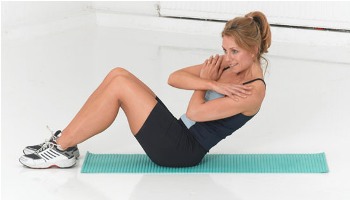Cardiorespiratory fitness is an essential component of physical fitness. For health and fitness applications, the terms cardiorespiratory fitness, cardiovascular fitness and aerobic endurance fitness are synonymous. Cardio respiratory fitness best describes the health and function of the heart, lunges and circulatory system and is related to cardiorespiratory endurance. Which is the ability to persist or sustain activity for prolonged periods.
Benefits of Cardiorespiratory Fitness
- Helps in reducing blood pressure.
- Helps to increase HDL cholesterol which is also called the good cholesterol
- Decreases total cholesterol
- Decreases body fat stores
- Increases aerobic capacity or endurance
- Increase heart function
- Helps in prevention of type 2 diabetes
- There will be reduction in glucose stimulated insulin secretion
Everyone has wondered at some point in time which cardio exercise is better. To put it in simple terms, both low and high intensity exercises will help you to burn off body fat. The question here is which is the most effective to burn off more body fat. To solve this problem here are a few best aerobic or cardio exercises from which you can choose the one you can afford and access.
Walking
Walking is the easiest aerobic conditioning activity and is often preferred because of its low injury rate, relative simplicity and adaptability to busy schedules, burns around 180 calories in 30 minutes. Use your creativity in adding jogging, hills, sprints in between, this can help your burn more calories. Make sure you are walking briskly; pretend you are trying to catch a bus and keep your head up back straight and swing your arms.
Jogging and Running
Jogging and running are superb cardiorespiratory endurance activity. The essential difference between the two is that jogging is slower running. These are one of the best activities which everyone can do at any place. It doesn’t require special equipments (except a good pair of shoes). Best of all you burn serious calories, especially if you add hills and sprints. You can burn around 300 calories in 30 minutes. The downside is its takes lot of practice and you should watch your knees and ankles for any discomfort or pain.
Bicycling
Outdoor or indoors, cycling gives some great cardio. It is a good alternative for those who do not like to jog or run or who have orthopedic limitation to weight bearing exercise. Using all the power in your legs, you’ll increase endurance while burning lots of calories, anywhere from 250 to 500 in 30 minutes depending on how fast you go and how high your resistance is.
Elliptical trainer
The elliptical trainer is a great way to build endurance while protecting your aching joints from high impact activities. Plus if you use one with arms, its just like using a cross country ski machine. The elliptical trainer is also good choice for runners looking for a break from hitting the pavement. You can easily burn around 300 calories in about 30 minutes.
Swimming
Swimming is a full body exercise. The more body parts you involve in your workout, the more calories you’ll burn. Speed 30 minutes doing the breaststroke and you’ll burl almost 400 calories. Best of all your joints are fully supported so that you don’t have to worry about high impact injuries. Swimming is a good alternative for those with chronic othropedic problems or recent musculoskeletal injury.
Step Aerobics
Step aerobics is one tough workout that targets your legs, butt and hips while burning almost 400 calories in 30 minutes (during high intensity sessions). Though it might look complicated, step is easy to learn if you start with a beginner class or video. As a beginner use a smeller step heights of 4 to 6 inches with a goal of 8 inches after four to eight weeks of successful training.

